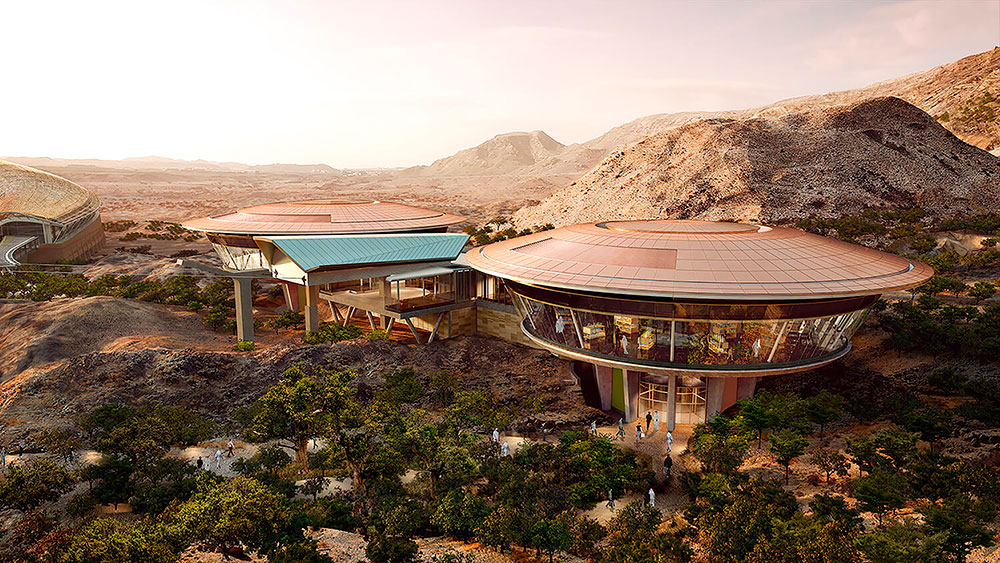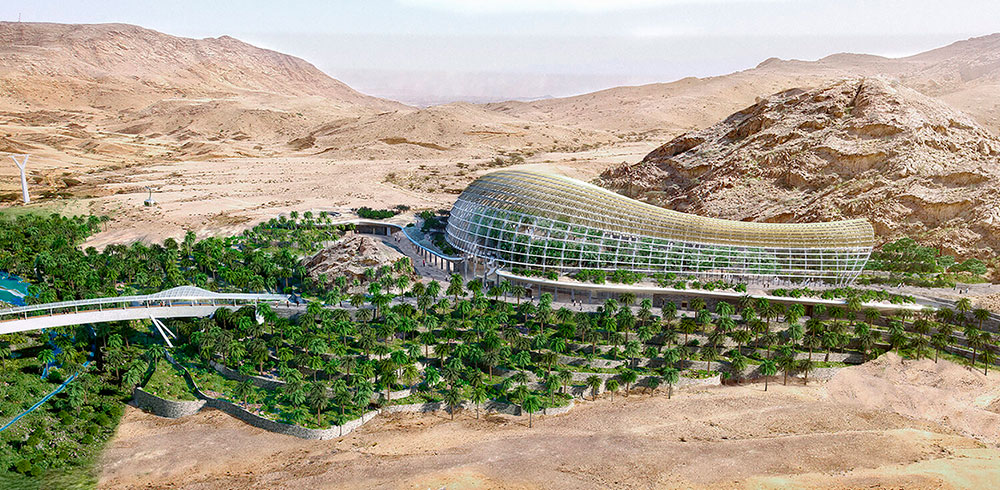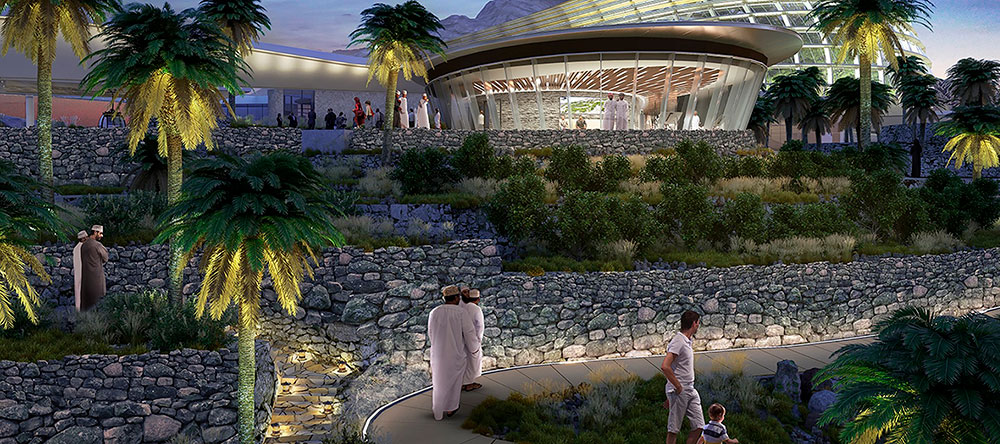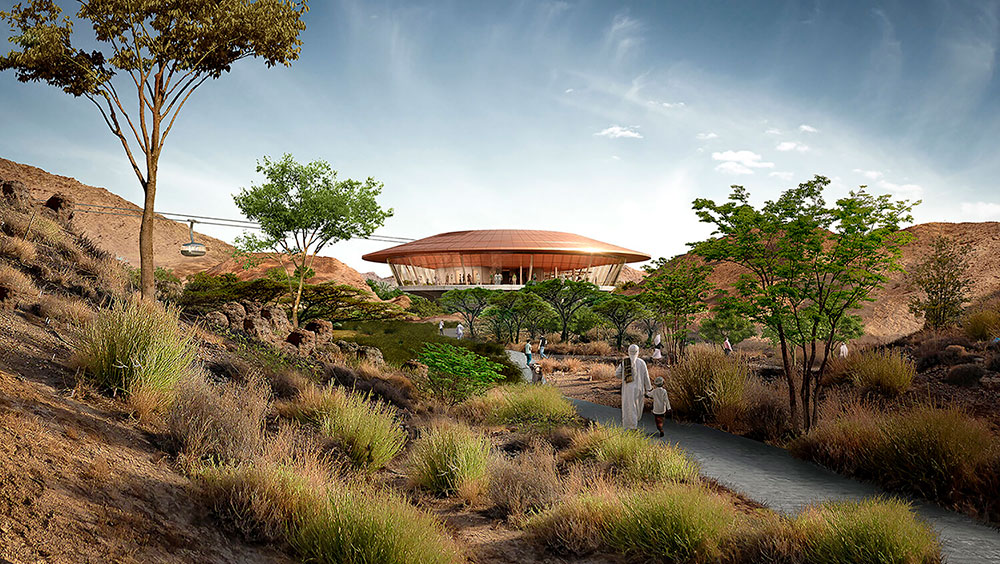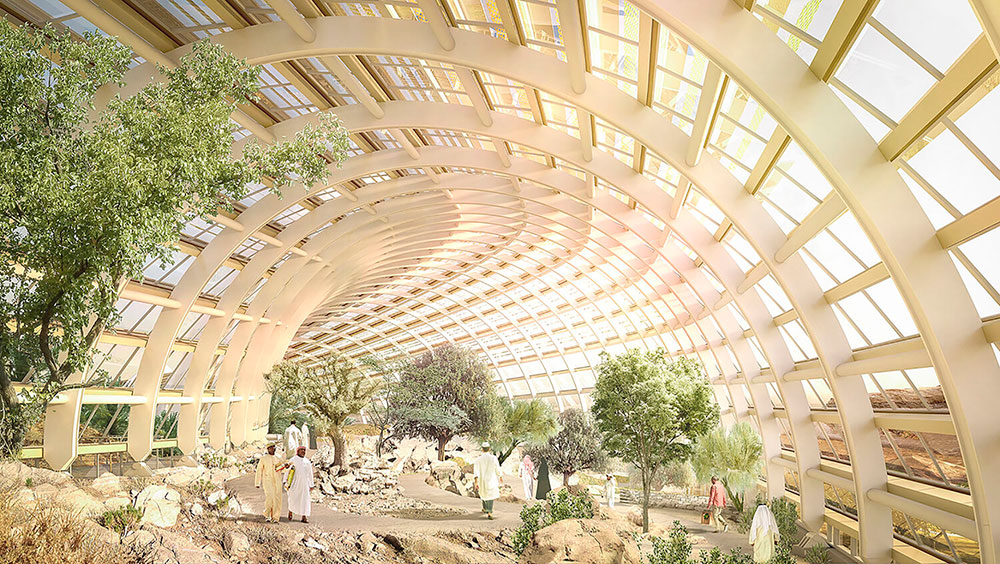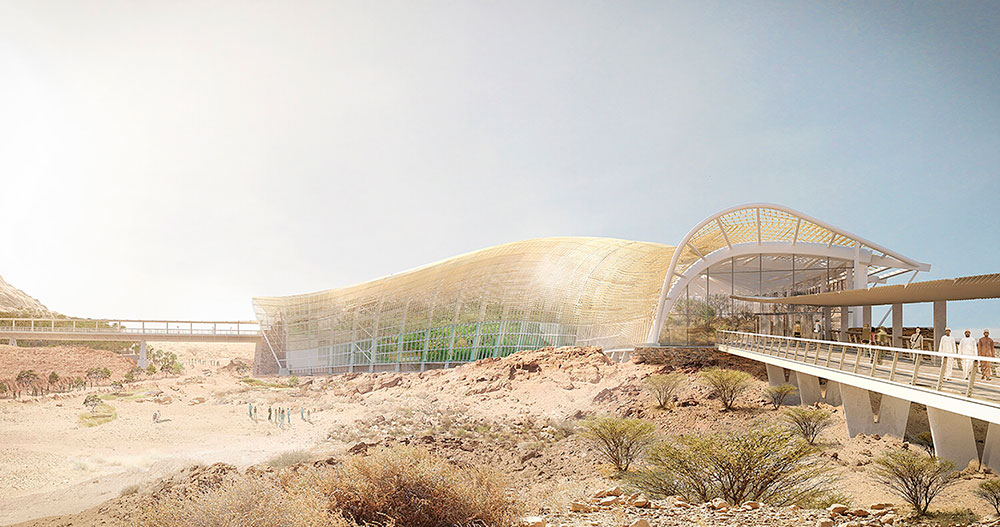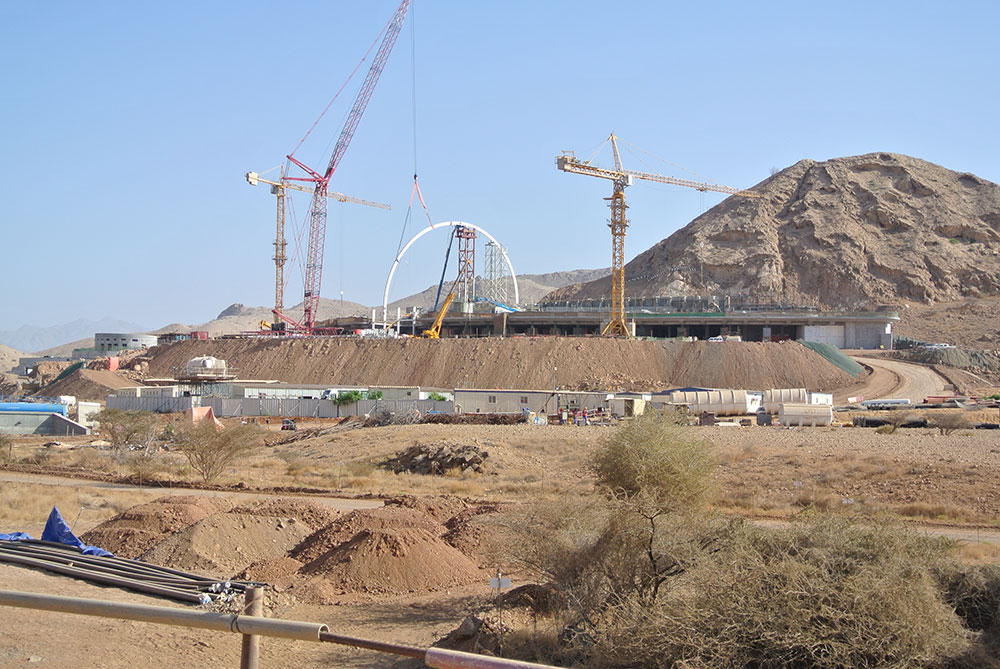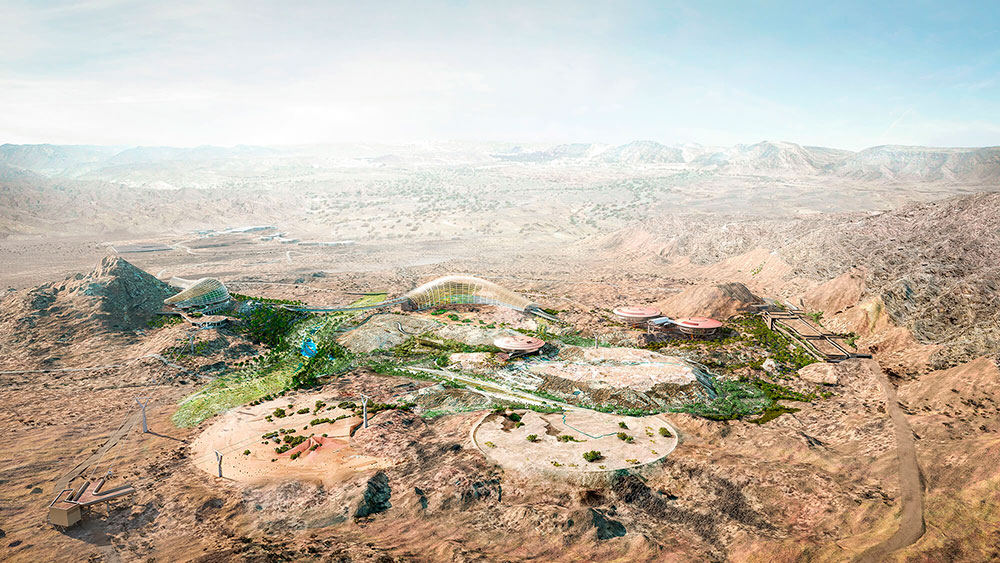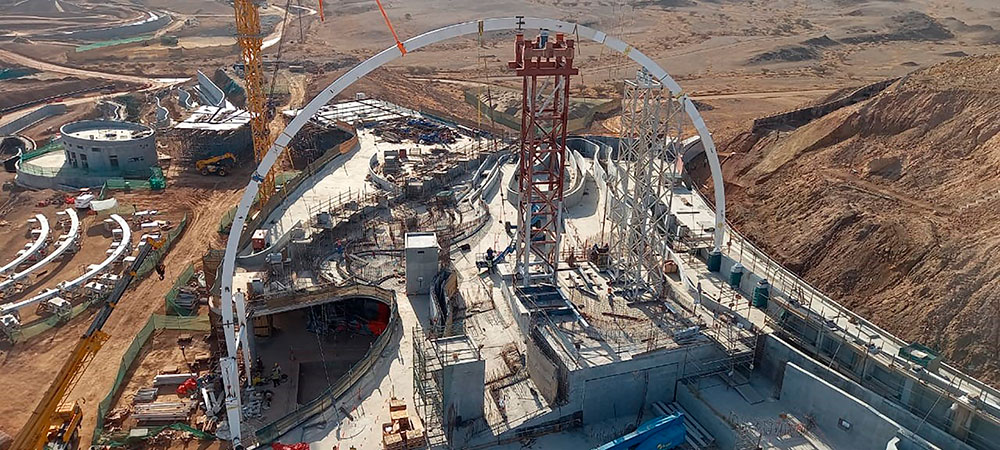The construction of the Oman Botanical Garden at the foot of the Al-Hajar Mountains in the capital Muscat recently reached an important milestone with the erection of the first structural arch of the 43 planned to cover its facilities. This first arch, located in the centre of the building, with a length of 40 metres, a height of 31 metres and a weight of 26 tonnes, gives an idea of the size of this new tourist attraction which is expected to open its doors in 2023. It is the result of a collaboration between the London-based architectural practice Grimshaw, the design, planning and engineering firm Arup, and the international museum and heritage consultancy Haley Sharpe Design. Once built, the Oman Botanical Garden will be the largest on the Arabian Peninsula and one of the largest in the world.
With an investment of some 154 million euros ($175 million), the botanical garden “will offer visitors the opportunity to experience Oman’s flora and vegetation, while learning about the country’s agricultural heritage, rich cultural traditions and legendary hospitality,” Minister of Heritage and Tourism Salim Al-Mahrouqi told the Middle East Monitor. Covering 420 hectares, the garden will house species, including endangered ones, from eight habitats in the sultanate. It will also showcase traditional crops and the many ways in which the people of Oman use plants. There will also be a visitor centre, playground, educational and research facilities.
In a series of carefully created naturalistic habitats, the Oman Botanical Garden will offer a tour of the species, many endemic, of the flora and vegetation of its central deserts, the gravel desert, the northern mountains, the oases, sebkhas (sedimentary deposits in arid regions more or less separated from the marine environment), sand deserts, southern mountains and wadis (an Arabic term for a dry valley or river through which water only flows in the rainy season).
Architecturally, as Grimshaw explains, “Passive and active shading, UV light controls, cooling and plant irrigation are integrated throughout the gardens”. In addition, “Building form, shape and materials have been considered and selected in response to atmospheric conditions and the natural topography“. Finally, “Sunlight, weather patterns and human behaviour have informed the garden’s design“.
Sources: Middle East Monitor, Oman Botanic Garden, Grimshaw, Trade Arabia, ME Construction News.
Images: Grimshaw.



